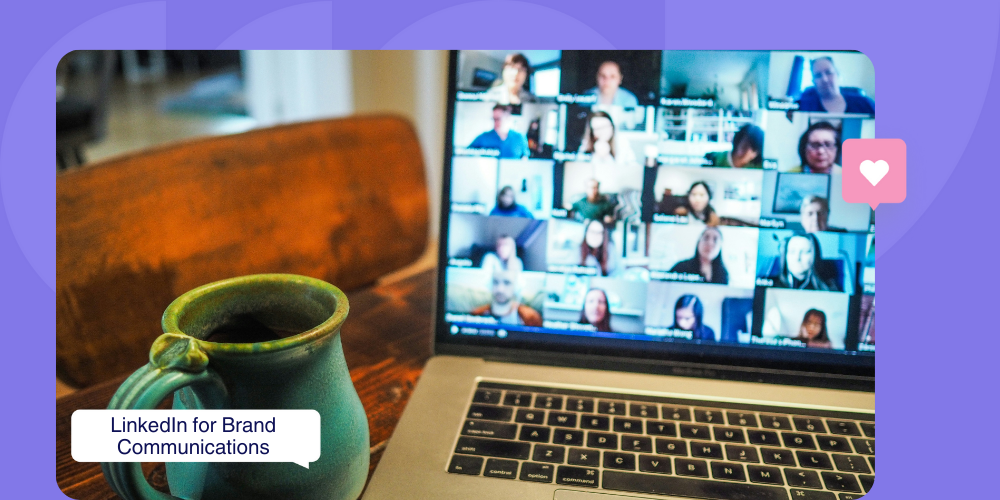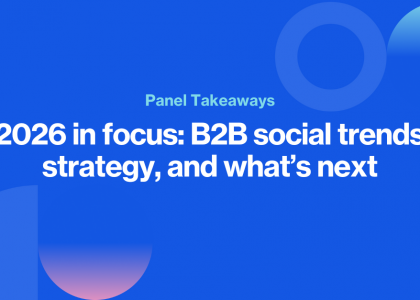Introduction
Today, Brand perception is shaped very much by every online interaction, so selecting the right platform for corporate communication is crucial. LinkedIn has emerged as a leading choice for brands aiming to build credibility and reach professional audiences.
Unlike other social media platforms, LinkedIn’s unique environment fosters trust, professionalism, and thought leadership, making it ideal for brands seeking a serious, clean, and trustworthy presence.
Why does LinkedIn stand out for brand communication? What are its benefits, and what are the key metrics to measure success?
Why LinkedIn is ideal for brand communications
1. Professional accountability
LinkedIn’s users engage under their real names, with profiles that display job titles, companies, and professional networks. This creates high accountability for what is posted, encouraging more thoughtful and accurate content. Unlike platforms where anonymity allows for speculation and rumors, LinkedIn’s professional context pushes users to consider the reputational impact of every post. Brands benefit from this culture, as users are more likely to trust content that aligns with the platform’s tone.
Argument: LinkedIn’s real-name policy and professional environment promote content that reflects well on both personal and corporate reputations, resulting in a cleaner, more credible space for brand communication.
LinkedIn’s real-name policy and professional context encourage users to share content that reflects well on their personal and corporate reputations, resulting in clean and credible brand-related content.
2. Focus on credibility and thought leadership
LinkedIn is designed for business-focused content, making it a hub for thought leadership and industry insights. Users come to LinkedIn expecting professional perspectives, well-researched articles, and data-backed posts, making it easier for brands to position themselves as experts in their fields. This environment encourages both brands and users to maintain high standards of credibility, citing sources and sharing fact-based content.
LinkedIn users and brands tend to cite sources, reference data, and publish well-researched articles or posts to maintain authority within their professional networks.
Argument: The emphasis on credibility and expertise on LinkedIn encourages brands to invest in well-researched, authoritative content that resonates with a professional audience.
3. Strategic communication style
The visibility of professional roles on LinkedIn creates an atmosphere where users and brands communicate with caution and intention. Whether it’s a senior executive or a brand page, LinkedIn content is often crafted with a strategic perspective, ensuring that every post aligns with company goals and values. This deliberate approach contrasts with posts on other platforms, which are impulsive and less governed.
LinkedIn users are generally more cautious about what they share and how they communicate because the platform is directly tied to their professional identity. Whether a user is an executive, manager, or entry-level employee, there is an understanding that their actions and communications on LinkedIn are visible to current and potential employers, colleagues, clients, and industry peers.
This environment discourages impulsive or inflammatory posts and encourages users to think more strategically about their shared content. Brands on LinkedIn, likewise, follow a more structured and carefully planned communication strategy to maintain a professional image, ensuring that corporate messaging is aligned with the company’s goals and values.
Argument: LinkedIn’s professional context motivates brands to adopt a more strategic approach to communication, ensuring consistency and alignment with corporate objectives. LinkedIn’s structure and culture drive brands to prioritize transparency and credibility, ensuring their messages resonate positively with their audience.
4. Platform moderation and culture
LinkedIn’s community guidelines prioritize respectful, professional discourse. This focus on quality discussions discourages divisive or off-topic content, creating a cleaner environment for brand messaging. LinkedIn’s moderation, along with its user community’s expectations, helps maintain a high standard of content that aligns with corporate interests.
Posts that are too controversial, off-topic, or divisive are often flagged or removed, maintaining a cleaner and more corporate environment. The platform encourages content that adds value to professional discussions, helping people build networks and careers.
Argument: LinkedIn’s emphasis on respectful and fact-based communication provides a stable environment for brands, making it easier to convey messages without sensational or controversial content noise.
5. Enhanced corporate transparency
Brands on LinkedIn operate in an obvious space, where every post is interconnected with corporate pages, executive profiles, and employee activities. This level of transparency encourages brands to focus on authentic, fact-checked information, as any misstep can directly impact their reputation. Unlike platforms where brands might use controversy to gain attention, LinkedIn rewards a commitment to integrity and transparency.
Brands on LinkedIn are more transparent and cautious because they operate in a space where their reputation can be directly impacted by what is posted. LinkedIn’s corporate pages, executive profiles, and employee activities are all interconnected, meaning that every post is scrutinized more closely.
Argument: Brands on LinkedIn are more likely to share transparent, fact-checked information because the platform’s structure encourages corporate accountability,
Key metrics to measure brand awareness and reach on linkedIn
Effectively measuring the impact of brand communications on LinkedIn requires focusing on metrics that reflect engagement, reach, and sentiment. Here are some key metrics to consider:
Impressions and Reach: Track how often your content appears on users’ feeds (impressions) and the number of unique users who see your content (reach). High reach indicates that your brand message is getting in front of a broad audience, which is crucial for awareness campaigns.
Engagement Rate: This metric measures the level of interaction with your content, including likes, comments, shares, and clicks. A high engagement rate suggests that your content resonates with the audience and encourages interaction.
Follower Growth: Monitoring the growth in followers on your company page can indicate the effectiveness of your brand communication strategy. An increase in followers suggests that your content is attracting new audience members who are interested in your brand.
Click-Through Rate (CTR): If your goal is to drive traffic from LinkedIn to your website or landing page, tracking CTR is essential. A high CTR indicates that your content is compelling enough to encourage users to learn more about your offerings.
Sentiment Analysis: Understanding how your audience feels about your brand is crucial for maintaining a positive image. Track the tone of comments, messages, and reactions to assess whether your content is being received positively.
Share of Voice (SOV): SOV measures your brand’s visibility relative to competitors on LinkedIn. It gives insight into how well your content performs compared to others in your industry, helping you refine your messaging and positioning.
Summary
LinkedIn’s professional and structured environment offers unique advantages for brand communication. The platform’s focus on real identities, credibility, and thought leadership helps brands build trust with their audiences in ways that are not as easily achieved on more casual social networks. By leveraging LinkedIn’s strengths, brands can effectively share corporate updates, insights, and stories in a way that reinforces their reputation and authority.
Key takeaways
LinkedIn is a prime platform for brands seeking to communicate with credibility and professionalism due to its culture of real-name accountability and respect for industry expertise.
The strategic nature of LinkedIn communications encourages brands to share thoughtful, well-researched content, leading to higher engagement and trust.
Measuring key metrics such as reach, engagement rate, and follower growth is essential to gauge the success of brand communications on LinkedIn.
Transparency and credibility are rewarded for professionals, making it a valuable platform for long-term reputation building.
By aligning your brand’s communication strategy with LinkedIn’s professional ethos, you can effectively enhance your brand’s reach, engagement, and overall reputation in the digital marketplace.




